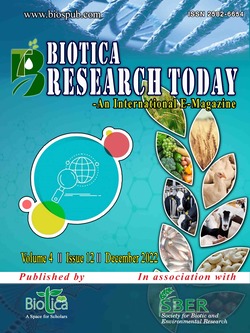
Kapok Tree - A Potential Non-Timber Forest Product Plant
Varsha Giri*
Arid Forest Research Institute, Jodhpur, Rajasthan (342 005), India
Vipula Vyas
Arid Forest Research Institute, Jodhpur, Rajasthan (342 005), India
Tanmaya Kumar Bhoi
Arid Forest Research Institute, Jodhpur, Rajasthan (342 005), India
Naveen Kumar Bohra
Arid Forest Research Institute, Jodhpur, Rajasthan (342 005), India
DOI: NIL
Keywords: Kapok, NTFP, Pantropical, Pioneer species
Abstract
The Ceiba pentandra (L.) Gaertn, often known as the kapok tree, has a majestic appearance and its geographic spread is pantropical. For humans, the species is hugely essential. It is frequently planted in alignment in cities and villages and is utilized for food, lumber and other services, pharmacopeia, and crafts. This plant's alcohol extract contains anti-diabetic, anti-inflammatory, and antibacterial properties. It is renowned for being a plentiful source of glycosides, flavonoids, and tannins. This plant's various therapeutic properties can be used to cure a wide range of ailments in all of its components. The hand-selected silk cotton from the ripened-dried fruit is further processed and utilized to create stuffing for cushions and beds as well as tennis balls, boxing gloves, and shooting outfits. Its cake serves as cow feed, while its oil is used to make soap. Fruit shells are burned as fuel.
Downloads
not found
Reference
Chaiarrekij, S., Apirakchaiskul, A., Suvarnakich, K., Kiatkamjornwong, S., 2011. Kapok I: Characteristics of kapok fiber as a potential pulp source for papermaking. Bioresources 1, 475-488.
Silitonga, A.S., Ong, H.C., Mahlia, T.M.I., Masjuki, H.H., Chong, W.T., 2013. Characterization and production of Ceiba pentandra biodiesel and its blends. Fuel 108, 855-858.
